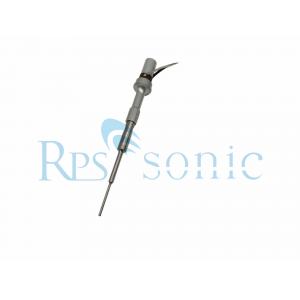

Add to Cart
Parameter
Introduction:
ultrasonic homogenizer sonicator is a multifunctional and multi-purpose instrument that uses strong ultrasound to produce cavitation effect in liquid and ultrasonically process substances. It can be used for the destruction of a variety of animal and plant cells and virus cells and can be used for emulsification , Separation, homogenization, extraction, defoaming, cleaning and accelerating chemical reactions, etc. It is widely used in biochemistry, microbiology, medicinal chemistry, surface chemistry, physics, zoology and other fields.
What's the principle of ultrasonic homogenizer sonicator
The principle of the ultrasonic homogenizer sonicator is not too mysterious and complicated. In short, it is to convert
electrical energy into acoustic energy through a transducer. This
energy passes through the liquid medium and becomes dense small
bubbles. These small bubbles burst quickly and produce energy like
a small bomb, thus breaking up the cells. And other substances.
Ultrasound is an elastic mechanical wave in a material medium. It
is a wave form, so it can be used to detect the physiological and
pathological information of the human body, which is both
diagnostic ultrasound. At the same time, it is also a form of
energy. When a certain amount of ultrasound is transmitted in the
body, the interaction and function between them can cause changes
in the function and structure of the organism, that is, the
ultrasonic biological effect. The effects of ultrasound on cells
mainly include thermal effects, cavitation effects, and mechanical
effects. The thermal effect is that when ultrasound propagates in
the medium, the frictional force hinders the molecular vibration
caused by ultrasound, and converts part of the energy into local
hyperthermia (42-43 ° C), because the critical lethal temperature
of normal tissue is 45.7 ° C, and the ratio of tumor tissue is
Normal tissue is highly sensitive, so at this temperature, the
metabolism of tumor cells is impaired, and DNA, RNA, and protein
synthesis are affected, thereby killing cancer cells without
affecting normal tissues. The cavitation effect is that under
ultrasound irradiation, vacuoles are formed in the living body, and
mechanical shear pressure and turbulence are generated with the
vibration of the cavitation and its violent explosion, which causes
tumor bleeding and tissue disintegration to cause necrosis. In
addition, when the cavitation bubble bursts, it generates
instantaneous high temperature (about 5000 ℃) and high pressure (up
to 500 × 104Pa), which can thermally dissociate water vapor to
generate .OH radicals and .H atoms. Atom-induced redox reactions
can lead to polymer degradation, enzyme inactivation, lipid
peroxidation, and cell killing. The mechanical effect is the
primary effect of ultrasound. During the propagation of ultrasound,
the media particles alternately compress and stretch to form a
pressure change, causing damage to the cell structure. The strength
of the killing effect is closely related to the frequency and
intensity of ultrasound.
Application:
Miniature lab ultrasonic sonochemistry can be used for small ultrasonic research:
Before ultrasonic treatment
After ultrasonic treatment
